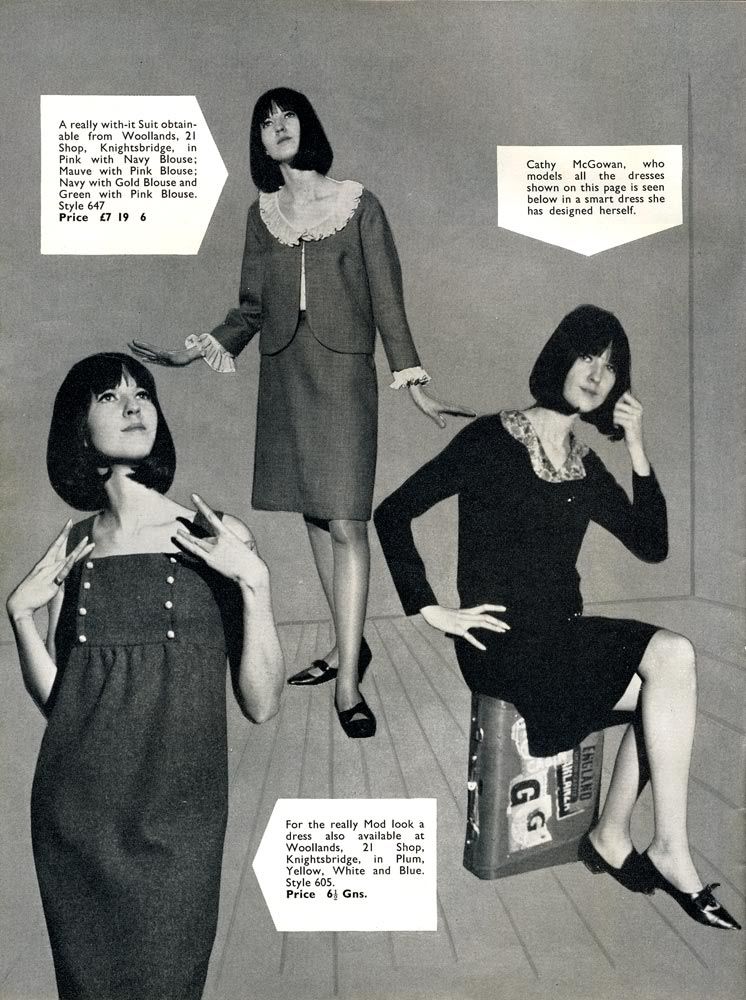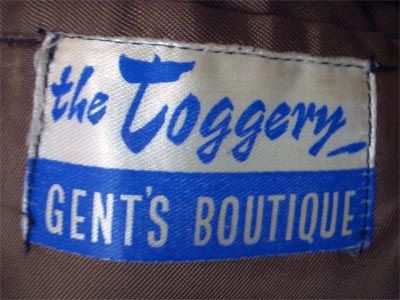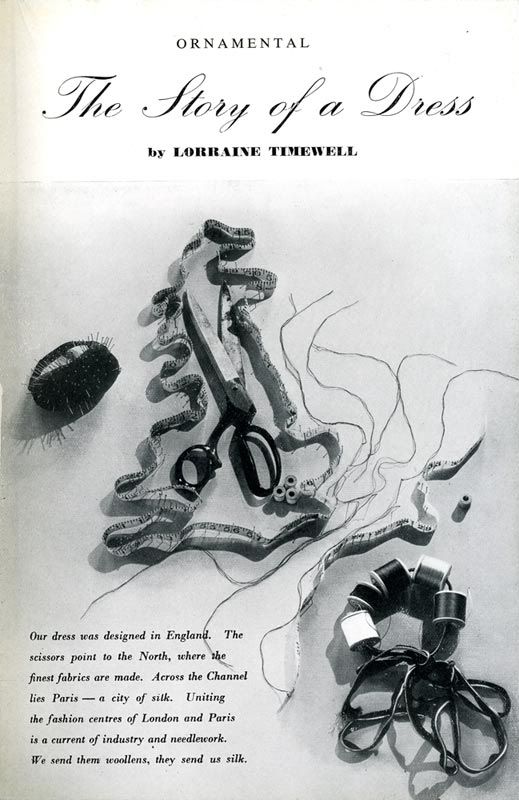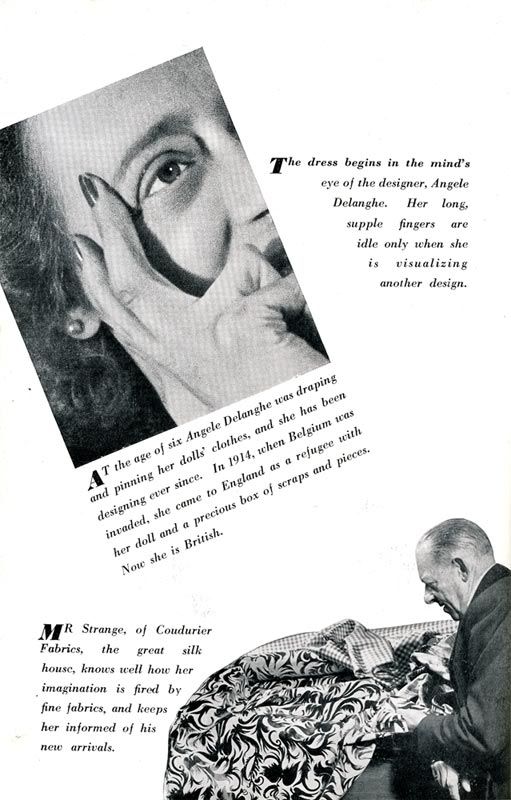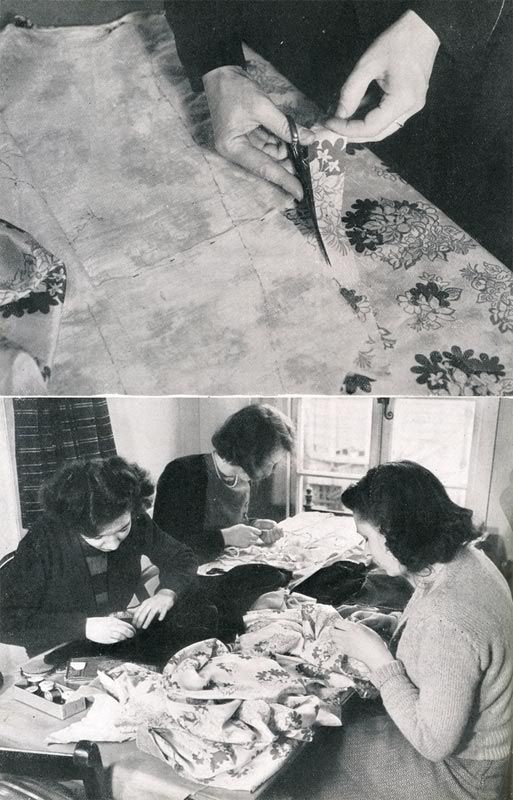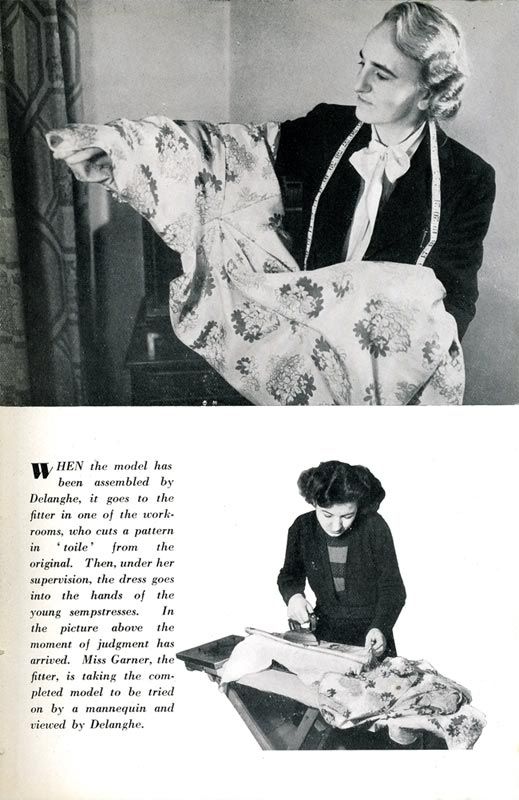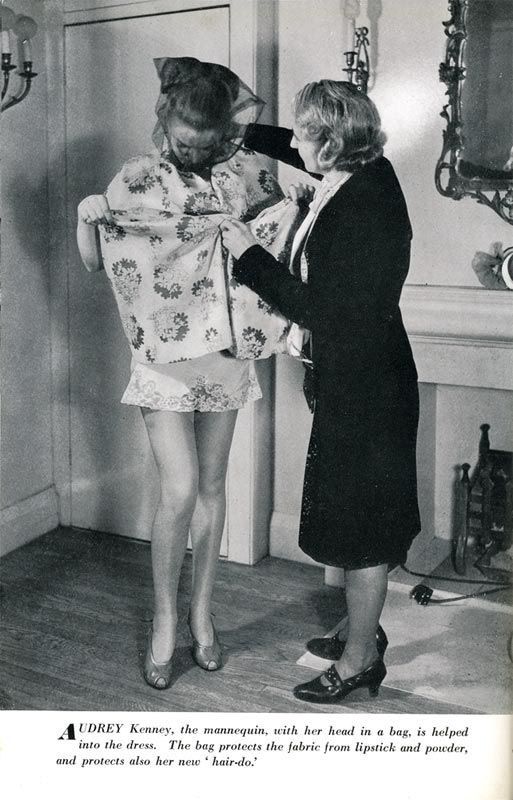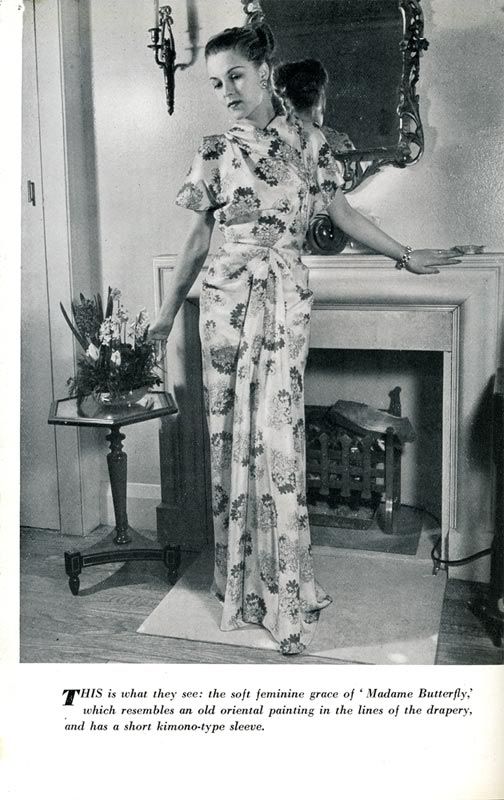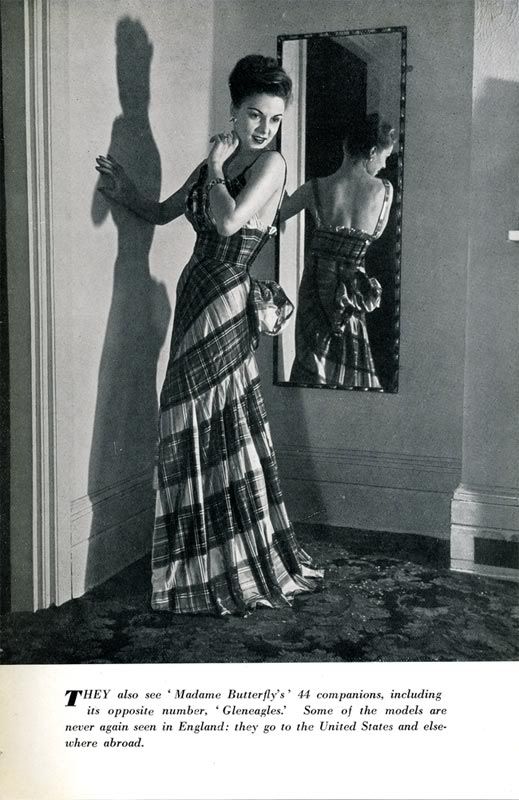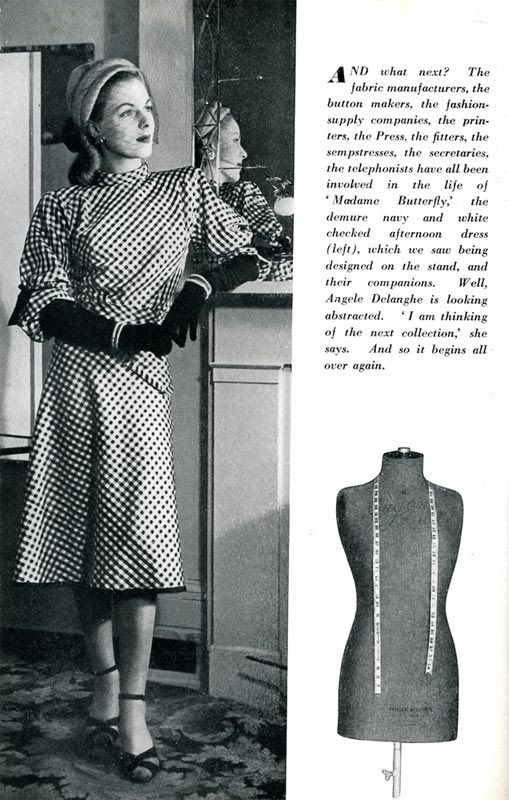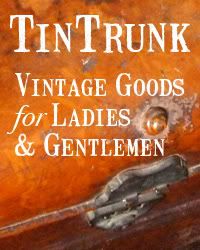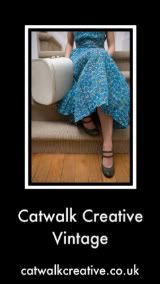Finding historic accounts of men's fashions can be a challenge. For the most part, women's fashions dominate surviving records for obvious reasons: fashion has long been assumed to be a largely feminine preoccupation, women's fashions have a faster turnover of trends so there's always some new novelty to observe, and they tend to be more dramatic and eye-catching. Equally, while a woman's appearance was (and frequently still is, sadly) considered to be the most pertinent and interesting aspect of her being, a man's appearance was taken to be the least important thing about him, unless it was particularly remarkable or curious. Men were judged, and recorded, on different criteria - skills, talents, character, achievements - with their wardrobe coming very low on the list, if at all.
As a result, there's a real lack of detailed descriptions of everyday men's wear since it was usually considered of no importance or relevance. Which is why this short piece, 'Frenchmen's Fashions,' published in the seventh Saturday Book in 1947, is such a treasure. Written by Honor Tracy, it provides a precious snapshot of men's fashions in Paris in the immediate post-war period.
Monday, 24 January 2011
Frenchmen's Fashions, 1947
Labels:
1940s,
dress history,
fashion,
France,
menswear,
military surplus,
Paris,
Second World War
Monday, 22 November 2010
Cathy McGow-ow-ow-owan
Cathy McGowan models dresses, including one of her own design on the right, in Mod's Monthly, March 1964.
Two things have prompted this post. The first was finally deciding to sell a treasured mid-60s Cathy McGowan's Boutique mini mac that's been in my personal collection for years. You can take a peek at it right here.
The second was the ever wonderful Miss Peelpants, who, as well as kindly offering her opinion on my mac, posted some scans from the first ever Cathy McGowan's Boutique catalogue on her blog.
Its hard to gauge precisely how well known Cathy McGowan is these days - are teenagers aware of her in the same way that they might know something about Twiggy? - but she was, in her time, just as much of a style icon as La Moss is today (whatever you might think about her).
As presenter of Ready, Steady, Go! from 1964-66 she demonstrated an unerring sense of style that proved hugely influential to the hordes of young teenage girls who were avid viewers of the TV show, tuning in not just to see the latest pop sensations and dance steps, but Cathy's new outfit of the week.
I have four copies of The Mod's Monthly magazine from 1964, which I've covered before and no doubt will plunder again at some point, and Cathy features largely in all of them. Quite naturally since she was famously known as the "Queen of the Mods."
Labels:
1960s,
Cathy McGowan,
fashion,
magazine,
mods,
UK,
youth culture
Wednesday, 1 September 2010
Cabinet of Curiosities
Last week I came across OIOI, an art blog that is currently inviting submissions to an ongoing project called "Cabinet of Curiosities - Portrait Gallery." I read the brief, really enjoyed the selections that had been presented so far, and had to have a go myself.
The basic idea is to select nine objects that mean something to you and photograph them. These 'portraits' are shown without captions, presumably to allow the viewer to conjure up their own stories, impressions and connections. But apparently its ok to offer a bit more detail on your own blog or website. So I will.
My personal criteria for selection was simply that the objects had to be near to hand, which immediately says something about their position in the hierarchy of my possessions, and could fit onto the coffee table I was using as my neutral background. I chose quickly, without much thought or deliberation.
Please view the beautifully minimal presentation on OIOI first, and then, if you want to know a little more, there's a few details below.
My curiosities
Watch fob with a photograph of my grandfather as a little boy. On the reverse is a photograph of his father.
 Marks & Spencer card of bells - these look pretty old (1910s possibly?) and quite probably did cost a penny. Its nice to think that tinkling bells were considered "Household Necessities."
Marks & Spencer card of bells - these look pretty old (1910s possibly?) and quite probably did cost a penny. Its nice to think that tinkling bells were considered "Household Necessities."

La Brise celluloid folding fan - you pump the handle to make it spin. A marvellous little gadget that works surprisingly well.

Co-op delivery man's money bag, used by a food delivery man in St Helens, Lancashire during the Second World War. It has his number disc and a whistle on a chain. It also still had little paper cash bags inside.

Promotional pencil. A good, honest, straight-forward slogan.

Polish wooden peg doll - I like that she is rather sturdy, sensibly dressed and credibly a young girl. She can stand up on her own, with those large flat feet, unlike the attenuated, cartoonish Barbie with tiny high heels. This doll has been my buddy icon on Flickr for a good few years so I must relate to her at some deep level! I also remember having a very similar wooden doll made by Galt Toys when I was little, so there you are . . .

Necklace worn by the female impersonator Jimmy Slater. In his later years he was a well-respected pantomime dame and I can imagine that this necklace, with its exaggerated scale (the cream beads are the size of gobstoppers), would have been worn for his roles as Widow Twankey or one of the Ugly Sisters.

Carved bone binoculars - a souvenir of Queen Victoria's Diamond Jubilee in 1897. One lens has a Stanhope with portraits of her in 1837 and 1897, the other has "The principal royal residences": Osborne, Windsor Castle, Balmoral and Kensington Palace. The scale of this is impressive too - about 2 cm across at its widest point. Incredible, miniaturised technology employed to make what is basically a novelty charm.

Set of speckled bakelite clips - possibly for hanging photographic prints to dry? Their appeal seems quite obvious to me!
Quite what these nine objects say about me I'll leave you to decide. This was such fun to do and I'm very pleased that Vincent, the author of OIOI, decided this collection was worthy of featuring on his blog.
Why not have a go yourself? Here's the instructions again, in case you missed them at the top.
The basic idea is to select nine objects that mean something to you and photograph them. These 'portraits' are shown without captions, presumably to allow the viewer to conjure up their own stories, impressions and connections. But apparently its ok to offer a bit more detail on your own blog or website. So I will.
My personal criteria for selection was simply that the objects had to be near to hand, which immediately says something about their position in the hierarchy of my possessions, and could fit onto the coffee table I was using as my neutral background. I chose quickly, without much thought or deliberation.
Please view the beautifully minimal presentation on OIOI first, and then, if you want to know a little more, there's a few details below.
My curiosities
Watch fob with a photograph of my grandfather as a little boy. On the reverse is a photograph of his father.
 Marks & Spencer card of bells - these look pretty old (1910s possibly?) and quite probably did cost a penny. Its nice to think that tinkling bells were considered "Household Necessities."
Marks & Spencer card of bells - these look pretty old (1910s possibly?) and quite probably did cost a penny. Its nice to think that tinkling bells were considered "Household Necessities."
La Brise celluloid folding fan - you pump the handle to make it spin. A marvellous little gadget that works surprisingly well.

Co-op delivery man's money bag, used by a food delivery man in St Helens, Lancashire during the Second World War. It has his number disc and a whistle on a chain. It also still had little paper cash bags inside.

Promotional pencil. A good, honest, straight-forward slogan.

Polish wooden peg doll - I like that she is rather sturdy, sensibly dressed and credibly a young girl. She can stand up on her own, with those large flat feet, unlike the attenuated, cartoonish Barbie with tiny high heels. This doll has been my buddy icon on Flickr for a good few years so I must relate to her at some deep level! I also remember having a very similar wooden doll made by Galt Toys when I was little, so there you are . . .

Necklace worn by the female impersonator Jimmy Slater. In his later years he was a well-respected pantomime dame and I can imagine that this necklace, with its exaggerated scale (the cream beads are the size of gobstoppers), would have been worn for his roles as Widow Twankey or one of the Ugly Sisters.

Carved bone binoculars - a souvenir of Queen Victoria's Diamond Jubilee in 1897. One lens has a Stanhope with portraits of her in 1837 and 1897, the other has "The principal royal residences": Osborne, Windsor Castle, Balmoral and Kensington Palace. The scale of this is impressive too - about 2 cm across at its widest point. Incredible, miniaturised technology employed to make what is basically a novelty charm.

Set of speckled bakelite clips - possibly for hanging photographic prints to dry? Their appeal seems quite obvious to me!
Quite what these nine objects say about me I'll leave you to decide. This was such fun to do and I'm very pleased that Vincent, the author of OIOI, decided this collection was worthy of featuring on his blog.
Why not have a go yourself? Here's the instructions again, in case you missed them at the top.
Sunday, 29 August 2010
The Toggery: Stockport's rock'n'roll tailor
I found this jacket at Stockport's flea market about four years ago. The stall holder told me he bought it for 13 guineas when he was 16 years old from a local menswear shop called The Toggery. Judging by its condition, it looked like there had been few occasions (if any) when he had summoned up sufficient courage to wear it. Its quite a piece.
Of course, I was filled with curiousity about The Toggery so I looked it up online and most of the references I discovered related to the 1960s band The Toggery Five, managed by the proprietor of the shop, Michael Cohen, who obviously supplied their enviable wardrobes as well. Olaf Owre has composed a very thorough account of the band's story, and there's some fabulous pictures of them on the original singer, Frank Renshaw's website. Including this one:
The Toggery Five outside The Toggery, Mersey Square, Stockport, 1964. Picture source The Toggery Five 1963-1966.
Graham Nash of the Hollies had worked there and, in fact, Michael Cohen went on to become their manager too.
This shop was evidently a leading source of ultra fashionable menswear in the north west during the 1960s, and supplied 'fab gear' (apologies, it seemed appropriate!) to numerous local, regional, and not so local, bands. Including the Beatles and the Rolling Stones (allegedly) - we'll come to that soon enough.
The Toggery, it was becoming clear, was an historically significant nexus of the music and fashion scenes of the time, so how come I'd never heard of it?
Anyway, some people I know, of a certain generation, remember The Toggery vividly. My mum worked at a branch of Boots which was opposite The Toggery, and fondly recalls glimpsing the steady procession of handsome young men who patronised the shop. Joe Moss remembers getting his best ever suit from The Toggery in his younger days, not to mention boots and numerous shirts. He also has a friend called Pete Maclaine who used to work there, who was still in touch with Michael Cohen himself.
I wondered if it would be possible to interview Mr Cohen to find out more of this story, and, thanks to the kind efforts of Pete Maclaine, it turned out it was. What follows is material drawn from an interview with Michael Cohen conducted on 5th August 2009, with Pete and Joe in attendance (and sometimes chipping in).
An aside - Pete is a significant player in the Manchester music scene himself. As Pete Maclaine and the Dakotas (later Pete Maclaine and the Clan) he has been a musician for nearly 50 years, and is still going strong. His band were the first from Manchester to play the Cavern in Liverpool, and he has the unusual distinction of having had the Dakotas stolen from under him by Brian Epstein, who installed Billy J. Kramer as the lead singer instead. He has a phenomenal store of anecdotes about the music business and his adventures in it, (this article has a few good ones) not to mention an inexhaustible fund of jokes and patter.
On to the story, which follows after the jump:
Labels:
1960s,
fashion,
menswear,
mods,
music,
pop,
rock'n'roll,
Stockport,
The Toggery
Wednesday, 4 August 2010
Following fashion can be hazardous to your health
PLATFORM SHOES
Sunday, 1 August 2010
The Story of a Dress
"The Story of a Dress" by Lorraine Timewell, The Saturday Book 7, 1947, pp. 71-80.
Our dress was designed in England. The scissors point to the North, where the finest fabrics are made. Across the Channel lies Paris - a city of silk. Uniting the fashion centres of London and Paris is a current of industry and needlework. We send them woollens, they send us silk.
The dress begins in the mind's eye of the designer, Angele Delanghe. Her long, supple fingers are idle only when she is visualizing another design.
At the age of six Angele Delanghe was draping and pinning her doll's clothes, and she has been designing ever since. In 1914, when Belgium was invaded, she came to England as a refugee with her doll and a precious box of scraps and pieces. Now she is British.
Mr Strange, of Coudurier Fabrics, the great silk house, knows well how her imagination is fired by fine fabrics, and keeps her informed of his new arrivals.
In a tiny room she works with the selected fabric straight onto the dummy, its shoulder scarred with pin-marks. In picture one, she is concentrating her mind not on the checked silk, but on the floral printed silk lying on the table by Smuts the cat. She knows exactly what she wants to do with it, and in picture two begins to drape and pin. It is a fine silk in a pale oyster white, with burnt rose and grey outlined flowers scattered over it.
When the model has been assembled by Delanghe, it goes to the fitter in one of the workrooms, who cuts a pattern in 'toile' from the original. Then, under her supervision, the dress goes into the hands of the young sempstresses. In the picture above the moment of judgment has arrived. Miss Garner, the fitter, is taking the completed model to be tried on by a mannequin and viewed by Delanghe.
Audrey Kenney, the mannequin, with her head in a bag, is helped into the dress. The bag protects the fabric from lipstick and powder, and protects also her new 'hair-do.'
The date for the showing of the collections for each new fashion season is decided by agreement amongst the various designers, or couturiers. In London, they are known as the 'Big Ten' - the Incorporated Society of London Fashion Designers. Their present president is Norman Hartnell, and Delanghe is one of the 'Ten.' The eve of the collection finds the models facing their most formidable audience - the people who made them. The dress whose story we have been tracing (it has a name now, 'Madame Butterfly') passes the critical inspection of the staff. Then the clients arrive on the important day.
This is what they see: the soft feminine grace of 'Madame Butterfly,' which resembles an old oriental painting in the lines of the drapery, and has a short kimono-type sleeve.
They also see 'Madame Butterfly's' 44 companions, including its opposite number, 'Gleneagles.' Some of the models are never again seen in England: they go to the United States and elsewhere abroad.
And what next? The fabric manufacturers, the button makers, the fashion-supply companies, the printers, the Press, the fitters, the sempstresses, the secretaries, the telephonists have all been involved in the life of 'Madame Butterfly,' the demure navy and white checked afternoon dress (left), which we saw being designed on the stand, and their companions. Well, Angele Delanghe is looking abstracted. 'I am thinking of the next collection,' she says. And so it begins all over again.
_._._._._._._._._._._._._._._._._._._
This photo story appeared in the seventh edition of The Saturday Book - one of those compendiums of miscellany from the arts to anthropology, history and antiquities, social observation, folklore and all manner of diverting stuff - that were once so popular.
This edition was published in 1947, at pretty much the height of post-wartime austerity and a time when most women could only dream of a new evening gown made of silk, so its interesting to see that Ms Delanghe appeared to have no problem securing such scarce and valuable supplies. But then, as the piece points out, some (most?) of her output was destined for export.
Its great to see that the author, Lorraine Timewell, chose to feature Angele Delanghe rather than one of the more well known members of the London 'Big Ten' such as Hartnell, Hardy Amies or Digby Morton.
In fact I've found precious little about her, apart from these scraps:
Delanghe was an early member of the Incorporated Society of London Fashion Designers, formed in 1942, which included the Hon. Mrs Reginald Fellowes (its first president), Norman Hartnell, Peter Russell, Worth of London, Digby Morton, Hardy Amies, Bianca Mosca, Creed, Molyneux and Michael Sherard. (Information from In Vogue: Six Decades of Fashion by Georgina Howell and Exploring 20th Century London).
She was known for creating "soft feminine tailored clothing and beautiful romantic eveningwear and wedding gowns" (from The Cutting Edge: 50 Years of British Fashion, 1947-1997 by Amy de la Haye).
After the war she took over the Ladies' Outfitting and Ready to Wear Departments at Fortnum & Mason and "revitalized" them.
Former women's editor of the Yorkshire Post, Valerie Webster, recalls with palpable frustration that she was required to attend "the couture shows of people like Angele Delanghe and Lachasse who made tweedy suits and hefty jewel-encrusted evening gowns for the grouse moors and hunt ball scene." To be fair, this was probably in the early 1960s, and young Valerie was more interested in Mary Quant than grouse moors and hunt balls, and perhaps Delanghe was past her prime.
This little 'backstage' story of Angele Delanghe's work at least adds a little more to our knowledge of her.
Labels:
1940s,
Angele Delanghe,
dress history,
fashion designers,
haute couture,
London
Saturday, 17 July 2010
TinTrunk dips a toe into the fashion world
I'm a one-man band, a small-time vintage seller trying to establish a business, and my resources and capital amount to pretty much zero. But sometimes friends can surprise you.
One friend of mine - Elizabeth - is a stylist with some seriously impressive credentials, and we had talked about organising a photo shoot of some TinTrunk prime stock for some time. Yesterday, thanks to her, it happened.
There was a pretty vague, bullet-pointed brief about Englishness, eccentricity, awkwardness, unlikely combinations, plus a dash of surrealism and straight-faced humour, and some definite ideas about what to avoid - cosy nostalgia and whimsy, straining for 'authentic' replications of period fashions, chintzy floral teacups, and most of all cupcakes! I'm not a hater by any means, and I'm happy if those aspects of the current vintage trend work for other people, but they just don't work for me.
Elizabeth suggested I prepare a mood board of ideas and inspirations, which ended up being dominated by some of my collection of old photographs. I love the weird tension of self-consciousness and self-display seen in old snapshots and cheap studio portraits, but I was keen to avoid any kind of sepia-toned, slavish recreations. It was more about taking the mood and atmosphere of these anonymous shots and mixing it up with some David Hockney dandyism/Nancy Cunard decadent glamour/gender mix-up playfulness.
We had lots of ideas, but only one short day to shoot as much as we could.
A dear family friend, Helen, agreed to let us use her house and garden as our location. This house was a derelict 18th century farm building that she has, over a period of about 40 years, turned into an exquisite little cottage packed full of fascinating treasures, and surrounded by a lush garden with some surprising features.
Personally, I was happy to outline the brief and inspirations/influences and let Elizabeth and her talented young recruits run with it, and wait to see what happened. But bless their hearts, I was consulted at every step along the way.
Here's Rosa, one of the two intimidatingly lovely models, working my 1960s Pucci skirt with a black and white striped 70s blouse that Elizabeth pulled together (something that would never have occurred to me!), being photographed by the newly graduated Sally Davies. Incidentally, Sally has earned herself a first, and having seen her in action I can understand why.
Sally here is photographing Rosa with Hugh, our male model, who had a deliciously louche appearance - somewhat like a bored, seen-it-all aristrocrat - although he was in fact a very quiet and sweet young man.
I didn't take many photos myself, because I was a little bit preoccupied about looking after all my precious stock. Some of the items we used are very collectable (meaning they have some value) and I personally treat them with the care and scrupulousness of a museum curator since any damage, stains or flaws will reduce their value considerably. I tried to switch off that 'conservationist' voice in my head because it was such a privilege to see them worn and styled so imaginatively. This seemed to work for the duration of the shoot, and I'm so glad I stopped myself from intervening too much!
Helen's rotating summer house, provided a splendid backdrop for Rosa in a 1980s olive green plaid jumpsuit with vintage 1970s Terry de Havilland snakeskin platform shoes, and some bright green gloves that my sister gave me (not for sale, sorry!) Hugh sports some bright yellow trousers that Elizabeth had daringly combined with a 60s tweed women's cape and a bold polka dot tie.
You can also see Elizabeth poised and ready to pounce with a green suede 60s hood, but its anyone's guess as to whether Hugh or Rosa will end up wearing it. Which was one of the best aspects of the shoot - the garments were treated neither reverentially nor conventionally and Elizabeth just went with what seemed to work, based on her highly attuned fashiony instincts.
So here's a sneak preview of some of Sally's shots, and I'll leave it to you to decide if they fulfilled that brief detailed earlier.
Not that it matters anyway. I'm cock-a-hoop about them regardless, and I'm looking forward to exploiting them to the full for the forthcoming TinTrunk website, not to mention flyers, business cards, signs, badges, banners, fridge magnets, coffee mugs, t-shirts, mousemats - blimey, there's so much potential!
My sincere thanks to:
Elizabeth Cardwell/Moss - super duper stylist and all-round organisational talent.
Sally Davies - photographer (she can also style and create garments and is a very accomplished all-rounder in all kinds of fashiony stuff).
Kaye - our makeup artist who worked magic on Rosa for this shoot. Once I find out her full name and any website/online details these will be added here.
Rosa - the beautiful female model - ditto for details.
Hugh - the handsome male model - ditto for details.
Helen - for allowing us all to run amok in her fabulous house and garden.
One friend of mine - Elizabeth - is a stylist with some seriously impressive credentials, and we had talked about organising a photo shoot of some TinTrunk prime stock for some time. Yesterday, thanks to her, it happened.
There was a pretty vague, bullet-pointed brief about Englishness, eccentricity, awkwardness, unlikely combinations, plus a dash of surrealism and straight-faced humour, and some definite ideas about what to avoid - cosy nostalgia and whimsy, straining for 'authentic' replications of period fashions, chintzy floral teacups, and most of all cupcakes! I'm not a hater by any means, and I'm happy if those aspects of the current vintage trend work for other people, but they just don't work for me.
Elizabeth suggested I prepare a mood board of ideas and inspirations, which ended up being dominated by some of my collection of old photographs. I love the weird tension of self-consciousness and self-display seen in old snapshots and cheap studio portraits, but I was keen to avoid any kind of sepia-toned, slavish recreations. It was more about taking the mood and atmosphere of these anonymous shots and mixing it up with some David Hockney dandyism/Nancy Cunard decadent glamour/gender mix-up playfulness.
We had lots of ideas, but only one short day to shoot as much as we could.
A dear family friend, Helen, agreed to let us use her house and garden as our location. This house was a derelict 18th century farm building that she has, over a period of about 40 years, turned into an exquisite little cottage packed full of fascinating treasures, and surrounded by a lush garden with some surprising features.
Personally, I was happy to outline the brief and inspirations/influences and let Elizabeth and her talented young recruits run with it, and wait to see what happened. But bless their hearts, I was consulted at every step along the way.
Here's Rosa, one of the two intimidatingly lovely models, working my 1960s Pucci skirt with a black and white striped 70s blouse that Elizabeth pulled together (something that would never have occurred to me!), being photographed by the newly graduated Sally Davies. Incidentally, Sally has earned herself a first, and having seen her in action I can understand why.
Sally here is photographing Rosa with Hugh, our male model, who had a deliciously louche appearance - somewhat like a bored, seen-it-all aristrocrat - although he was in fact a very quiet and sweet young man.
I didn't take many photos myself, because I was a little bit preoccupied about looking after all my precious stock. Some of the items we used are very collectable (meaning they have some value) and I personally treat them with the care and scrupulousness of a museum curator since any damage, stains or flaws will reduce their value considerably. I tried to switch off that 'conservationist' voice in my head because it was such a privilege to see them worn and styled so imaginatively. This seemed to work for the duration of the shoot, and I'm so glad I stopped myself from intervening too much!
Helen's rotating summer house, provided a splendid backdrop for Rosa in a 1980s olive green plaid jumpsuit with vintage 1970s Terry de Havilland snakeskin platform shoes, and some bright green gloves that my sister gave me (not for sale, sorry!) Hugh sports some bright yellow trousers that Elizabeth had daringly combined with a 60s tweed women's cape and a bold polka dot tie.
You can also see Elizabeth poised and ready to pounce with a green suede 60s hood, but its anyone's guess as to whether Hugh or Rosa will end up wearing it. Which was one of the best aspects of the shoot - the garments were treated neither reverentially nor conventionally and Elizabeth just went with what seemed to work, based on her highly attuned fashiony instincts.
So here's a sneak preview of some of Sally's shots, and I'll leave it to you to decide if they fulfilled that brief detailed earlier.
Not that it matters anyway. I'm cock-a-hoop about them regardless, and I'm looking forward to exploiting them to the full for the forthcoming TinTrunk website, not to mention flyers, business cards, signs, badges, banners, fridge magnets, coffee mugs, t-shirts, mousemats - blimey, there's so much potential!
My sincere thanks to:
Elizabeth Cardwell/Moss - super duper stylist and all-round organisational talent.
Sally Davies - photographer (she can also style and create garments and is a very accomplished all-rounder in all kinds of fashiony stuff).
Kaye - our makeup artist who worked magic on Rosa for this shoot. Once I find out her full name and any website/online details these will be added here.
Rosa - the beautiful female model - ditto for details.
Hugh - the handsome male model - ditto for details.
Helen - for allowing us all to run amok in her fabulous house and garden.
Labels:
fashion,
photo shoot,
photography,
styling,
vintage
Subscribe to:
Posts (Atom)

